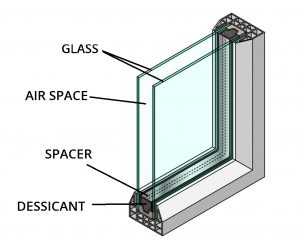All Categories
Featured
Table of Contents
Insulated Glass Unit – Igu in Koondoola WA
Laminated glass is typically used in areas in the house most vulnerable to injury from human impact such as bathrooms, doors, around staircases and in locations near to the floor (it fulfills the requirements of 'safety glass' that is mandated for usage in these areas by Australian Basic AS 1288 Glass in structures).
Toughened glass has been 'tempered' by being reheated and quickly cooled again. This process makes it much more powerful than standard glass it can resist higher effect loads before breaking. It likewise makes it much safer since, when it does shatter, it gets into many small cubic pieces rather than unsafe shards.
Home Window Glazing - Sustainability Victoria in East Fremantle WA
Nevertheless, toughened glass has no thermal or acoustic benefits over other glass of the exact same toning or thickness. Secondary glazing is where single-glazed windows are retrofitted with a transparent acrylic or glass sheet connected to the within the frame or openable sash with a secondary frame or with magnetic strips.


Secondary glazing will not carry out as well thermally as a manufactured IGU, since it is impossible to totally seal the boundary, but it can provide excellent noise control. Window films are a thin polymer movie including an absorbing color or reflective metal layer, with an adhesive support. They stick to your glazing to alter its colour or make it reflective.
Double Glazing - Albury - Twin Cities Glass in Woodvale Perth
Applied to existing glass, some window films can halve the general SHGC of the window by taking in and/or reflecting solar radiation. This can be particularly beneficial in hotter environments where cooling is the main concern, or on east and west elevations straight exposed to extended periods of sunshine. Window films may also reduce visible light transmittance.

For this reason, it is generally best to utilize an accredited installer of window movie. Frames have a significant impact on the thermal performance of windows and doors, because energy can be acquired and lost through the frame, in addition to through the glass. Various types of frame will permit various levels of heat gain and loss, so mindful choice of frame is necessary for efficient passive style.
Solace Creations: Home in Greenwood Western Australia
However, aluminium is likewise a great conductor of heat and will decrease the insulating worth of a glazing system, unless particularly crafted to reduce this. A 'thermally broken' frame is comprised of 2 aluminium areas linked by a structural insulator (usually a low-conductivity structural polymer). This 'breaks' the thermal connection through the aluminium and minimizes the heat streaming through the frame.
They can be costly, but rates are decreasing as they become more typical. Lumber frames are a good natural insulator that can match some home styles. Lumber frames should be made from types that have naturally high toughness or be dealt with to avoid decay and deformation. Check that the wood is sourced from a sustainably handled forest.
Why Install Stunning Double Glazing Windows During Summer? in Ashfield WA
(weather condition stripping) is set up.
u, PVC windows and doors have exceptional thermal efficiency Image: Ben Wrigley (Light Home Architecture and Science) Composite frames utilize aluminium profiles on the outer areas with either a wood or u, PVC inner section. These integrate the low upkeep and resilience of aluminium with much enhanced thermal efficiency.
Latest Posts
Home Window Glazing - Sustainability Victoria in Carmel WA
Windows Of Opportunity: Your Guide To High-performance ... in Kallaroo WA
Double Glazing Windows in Rockingham WA